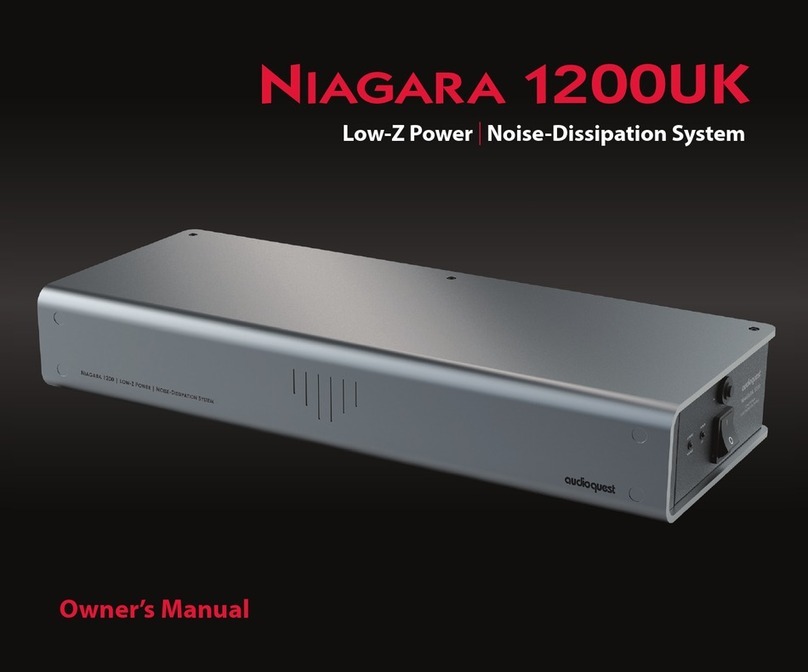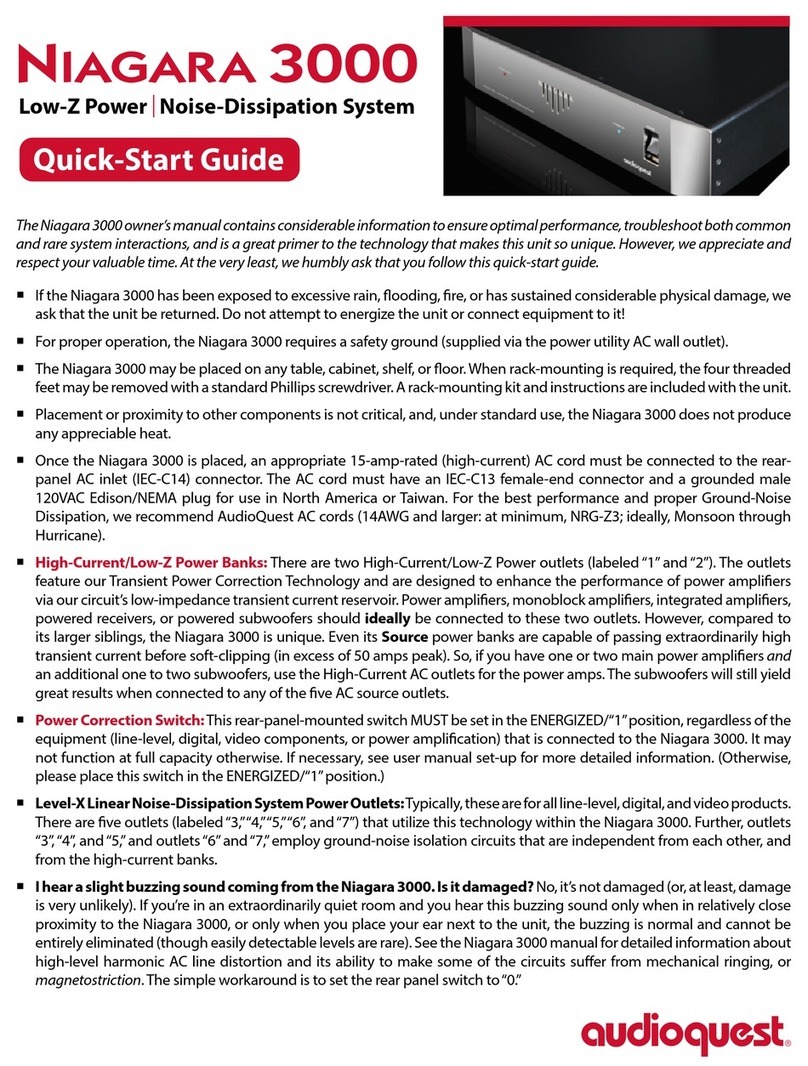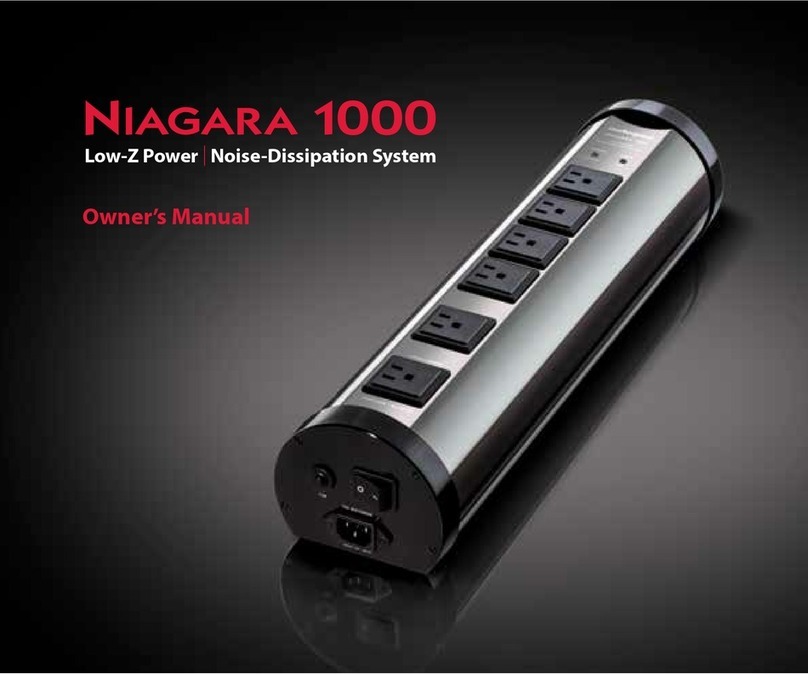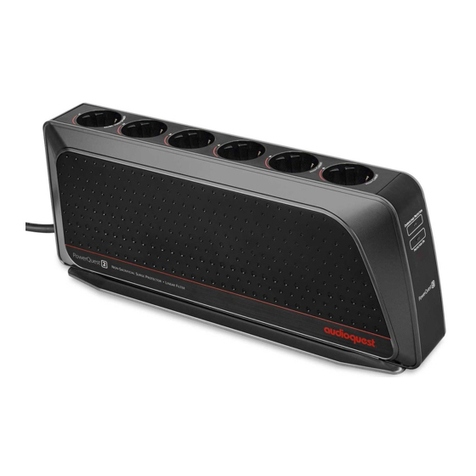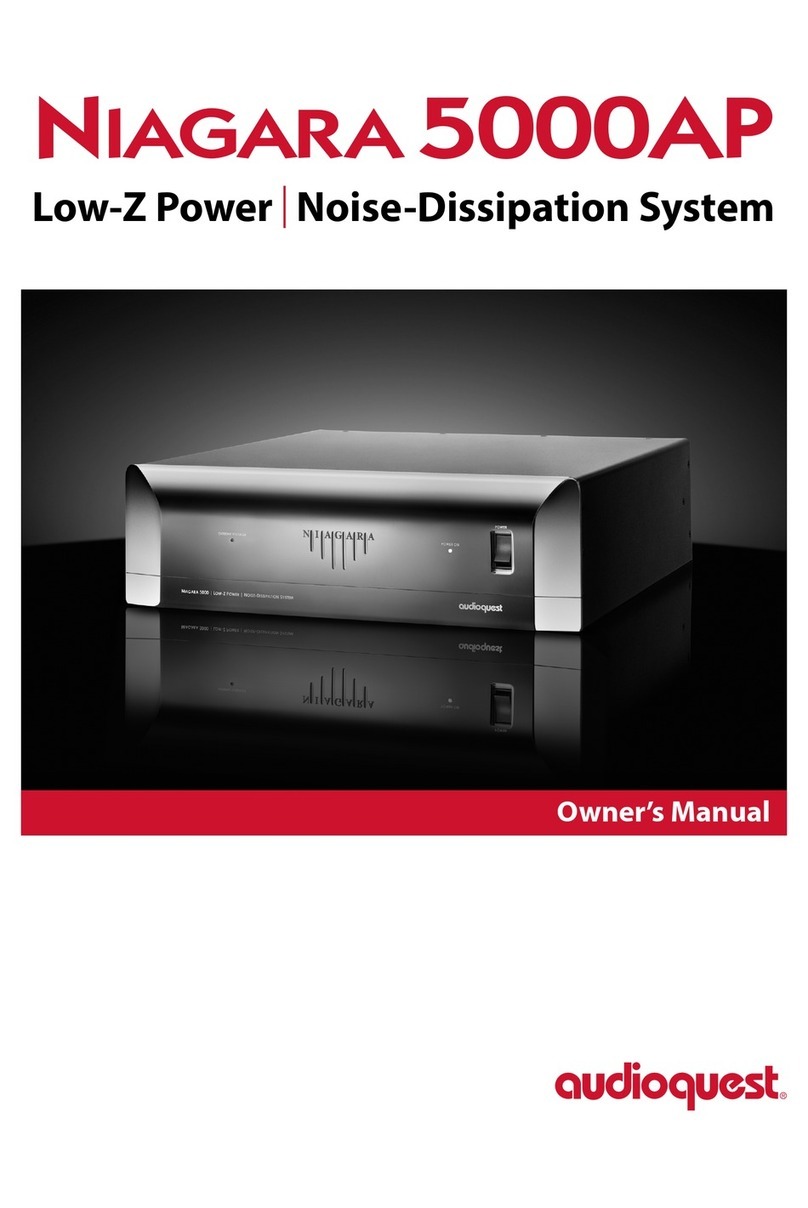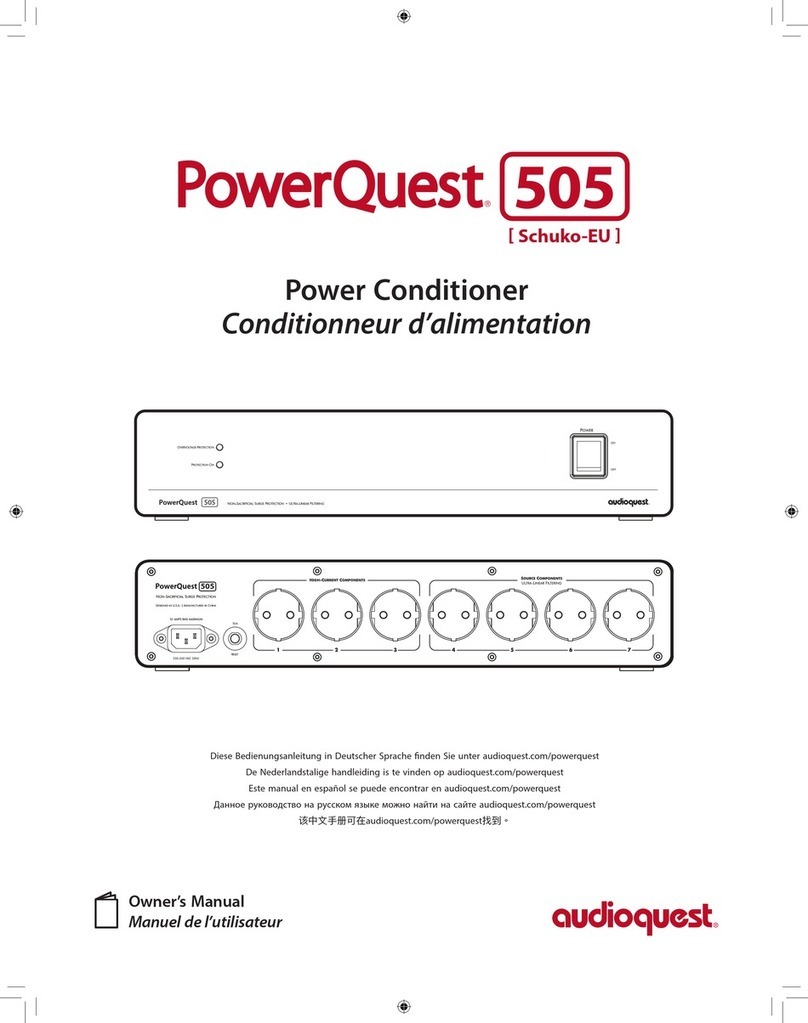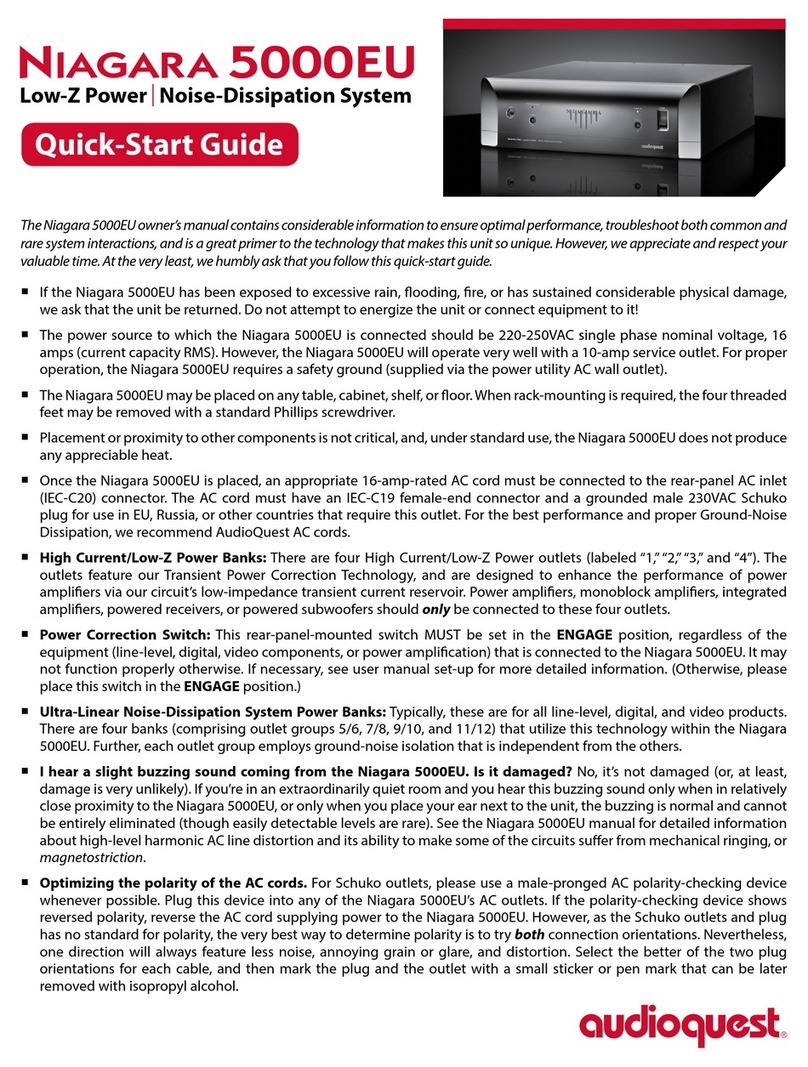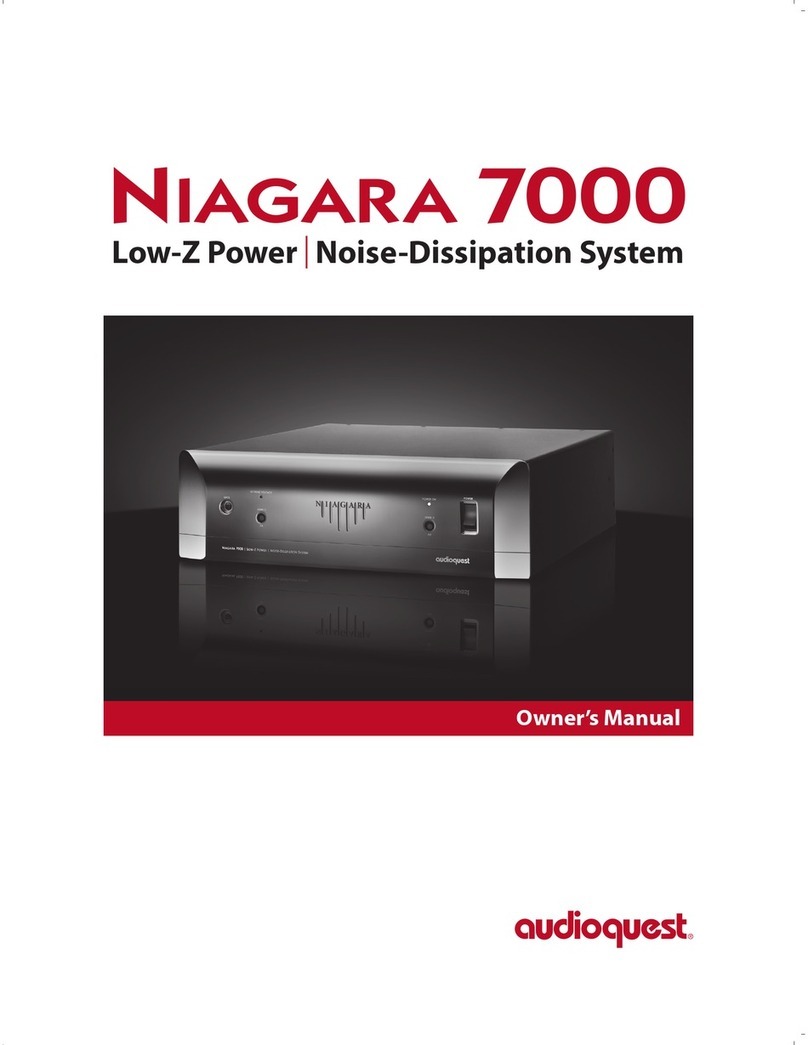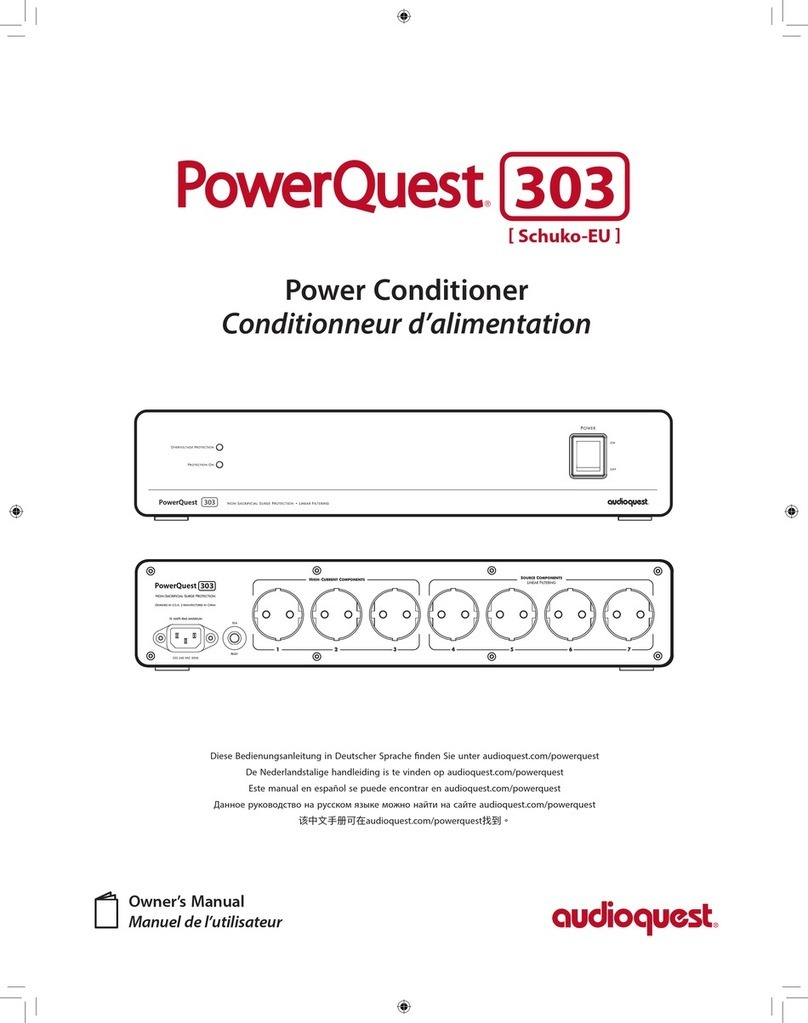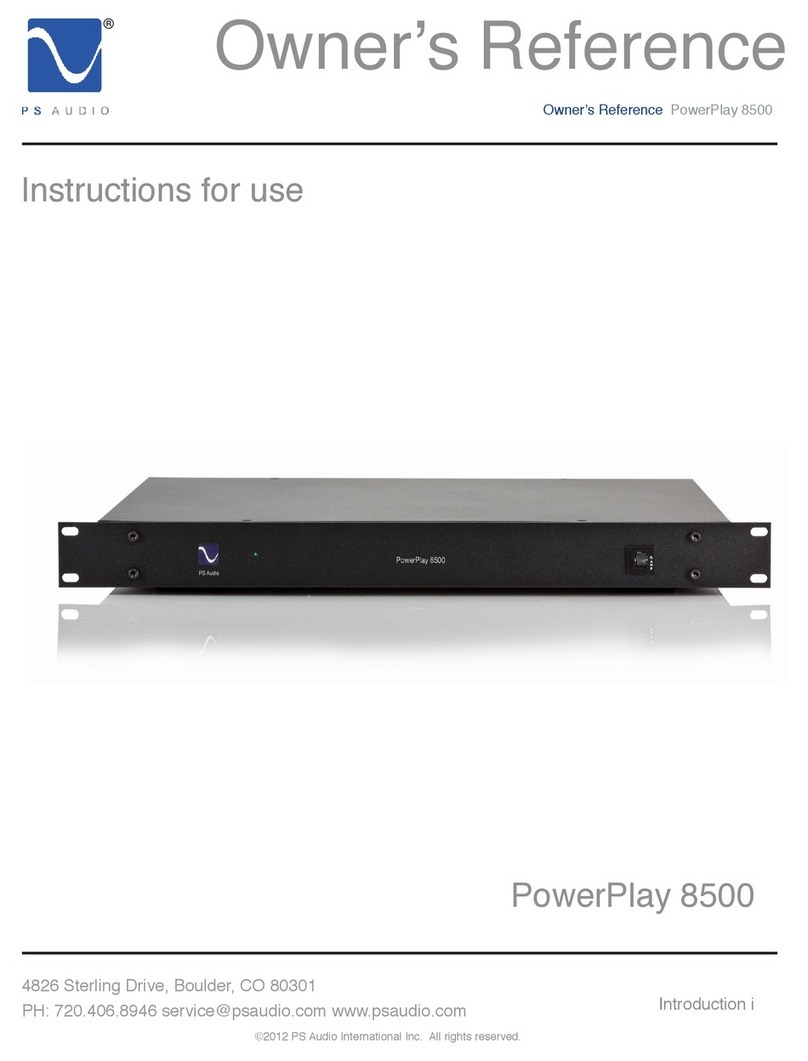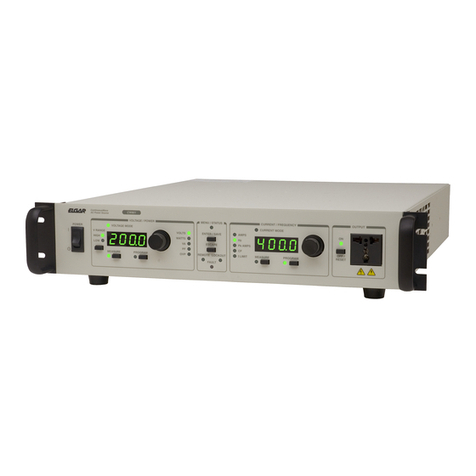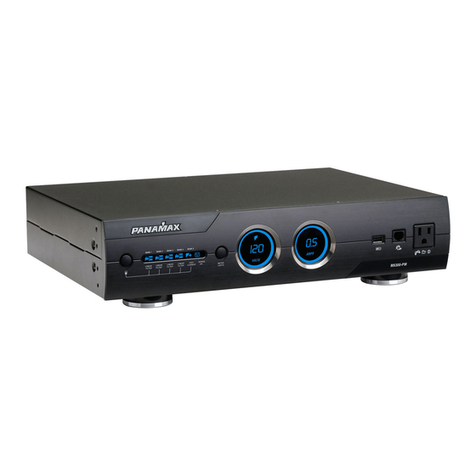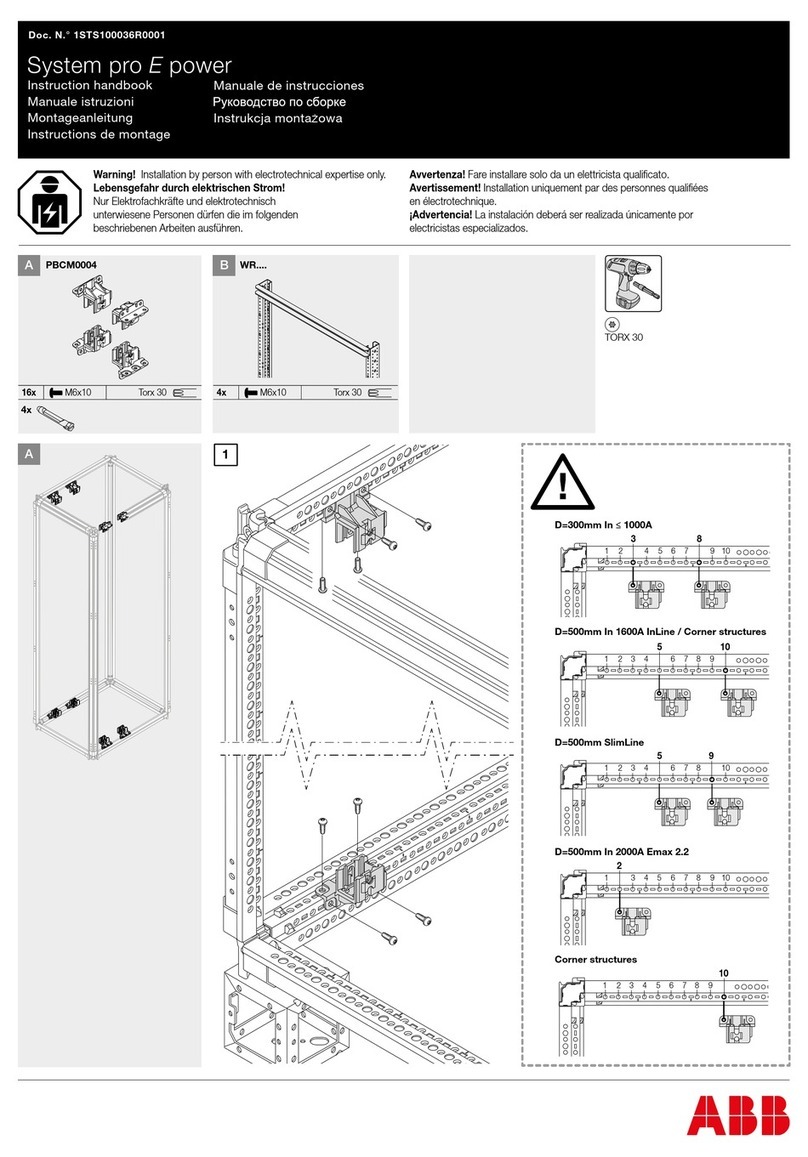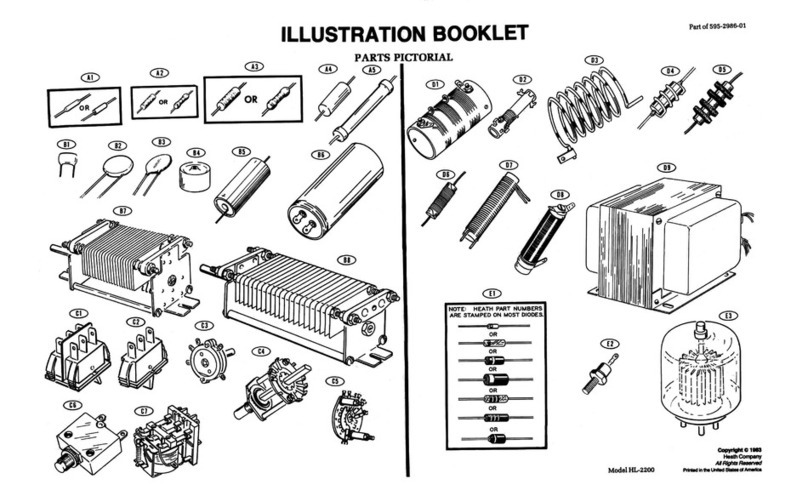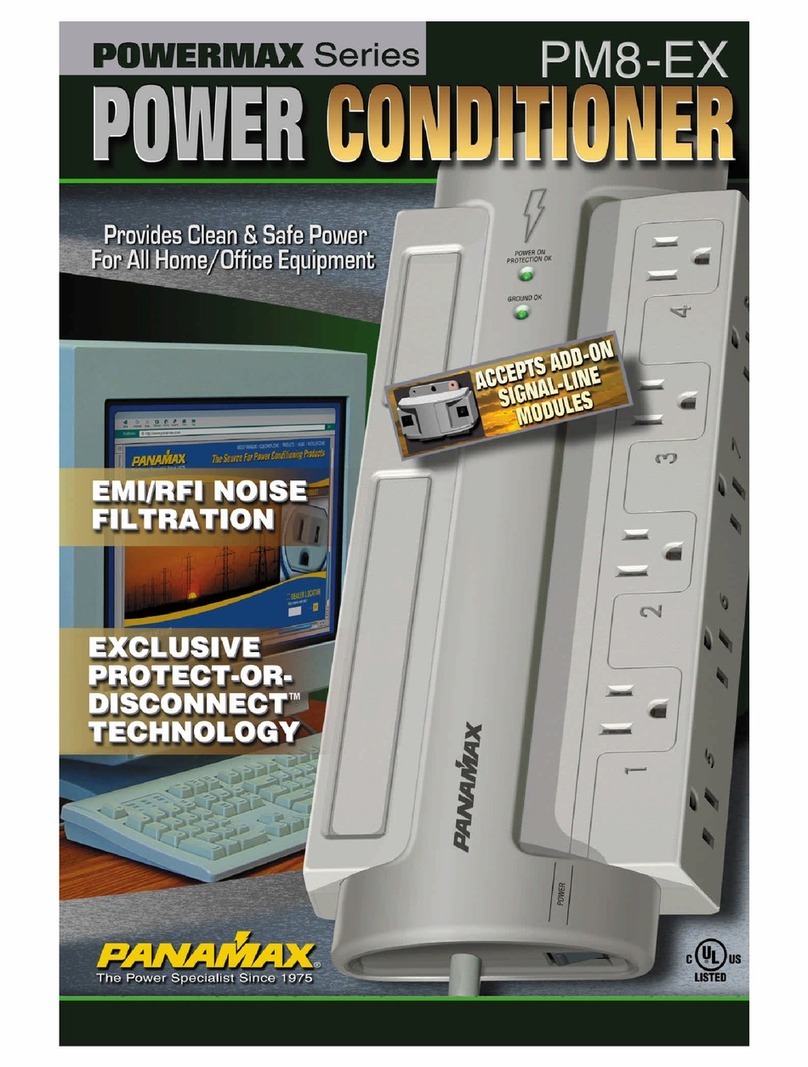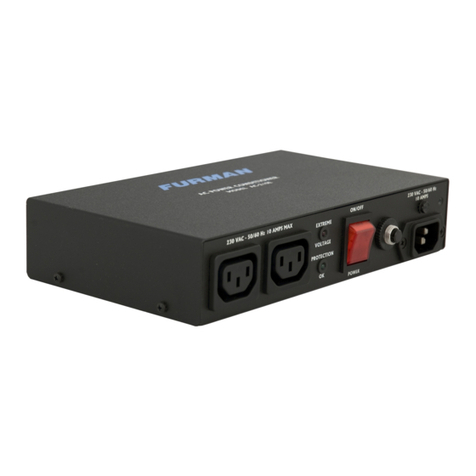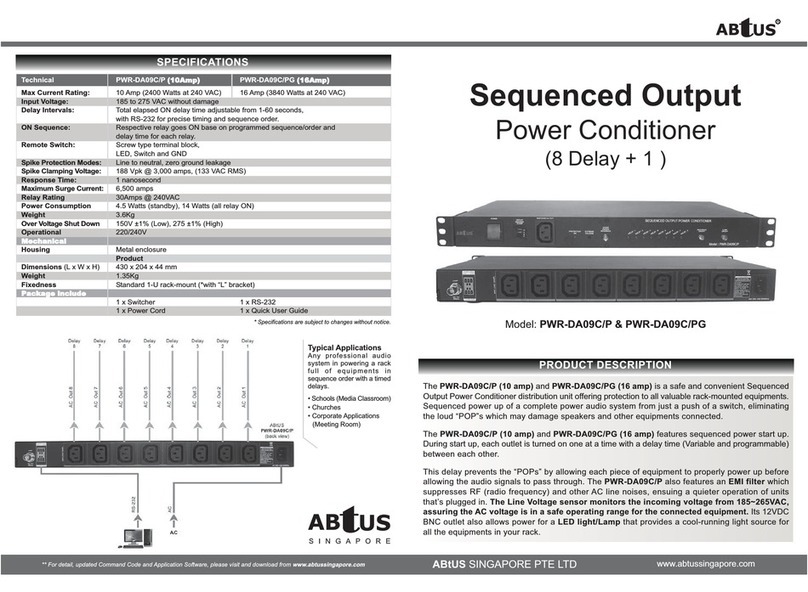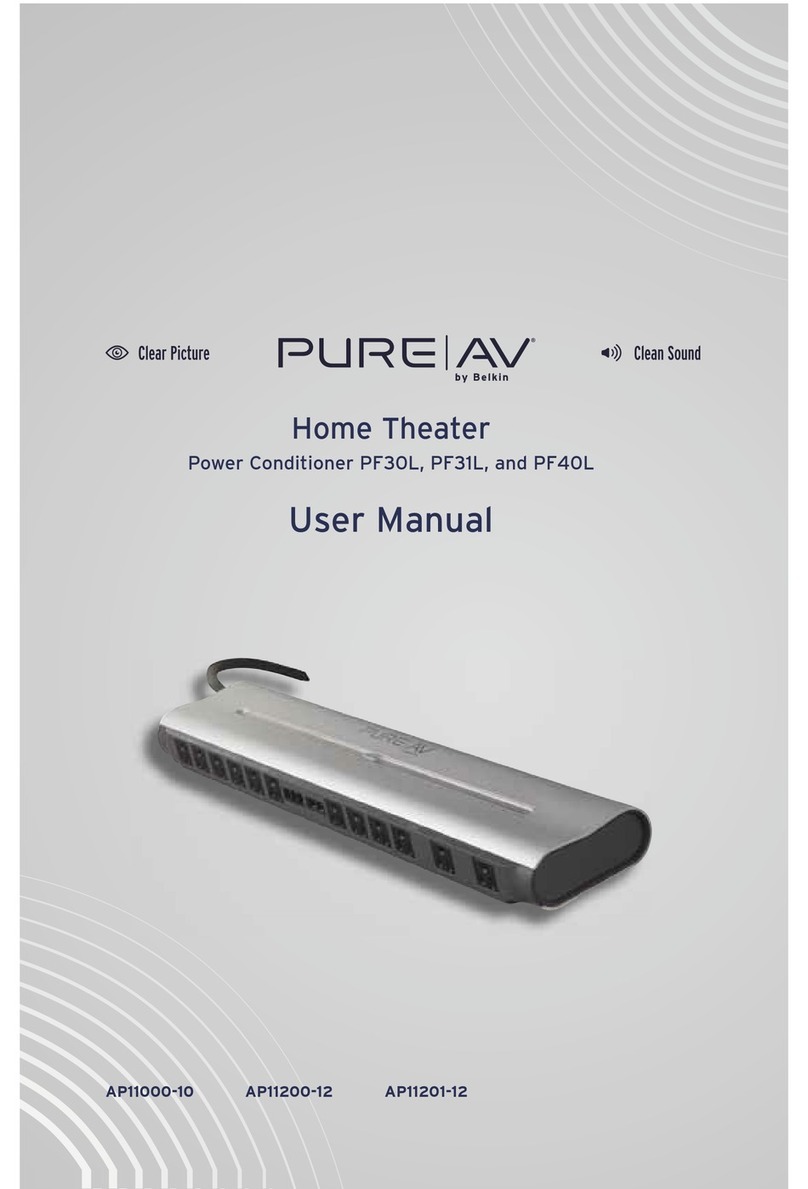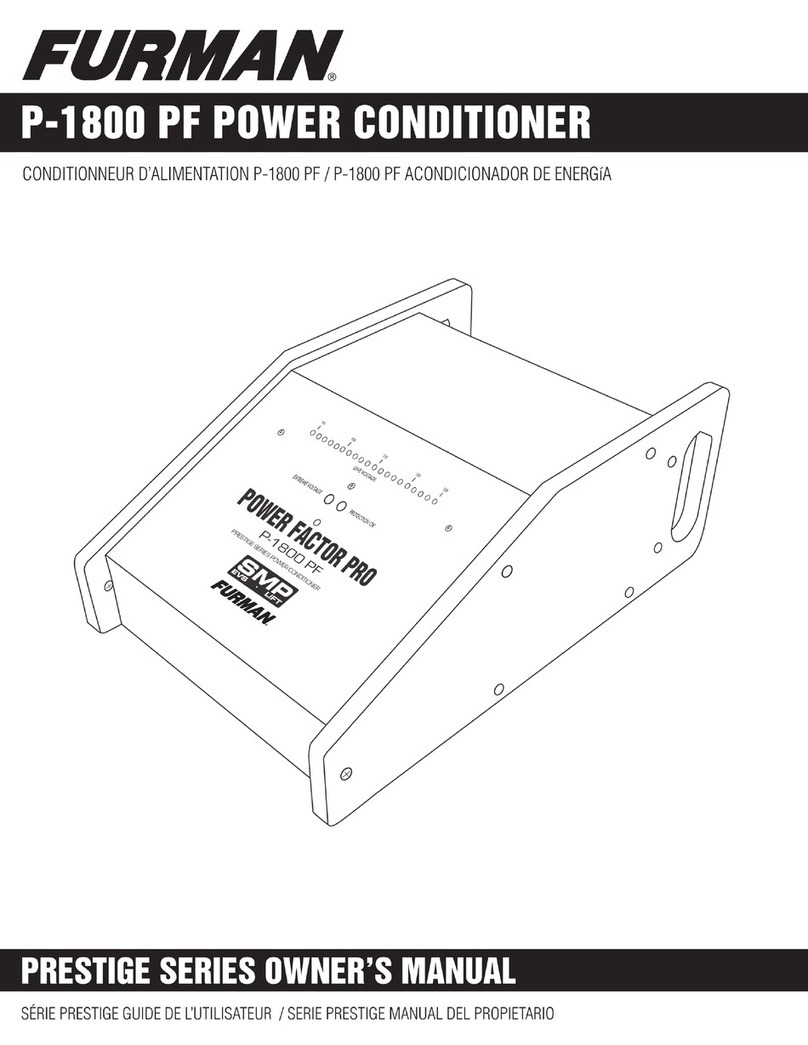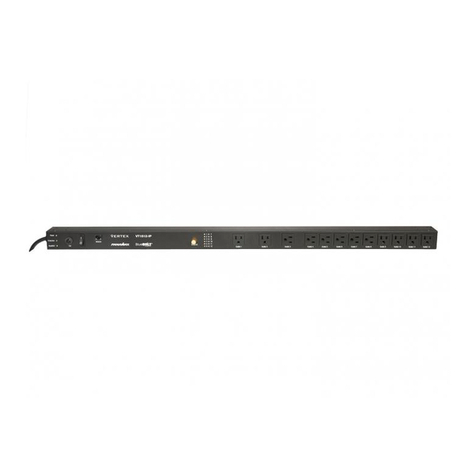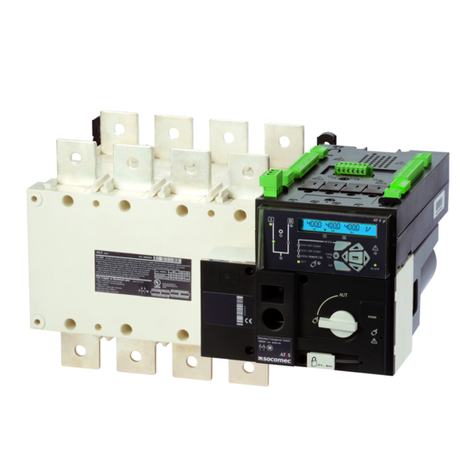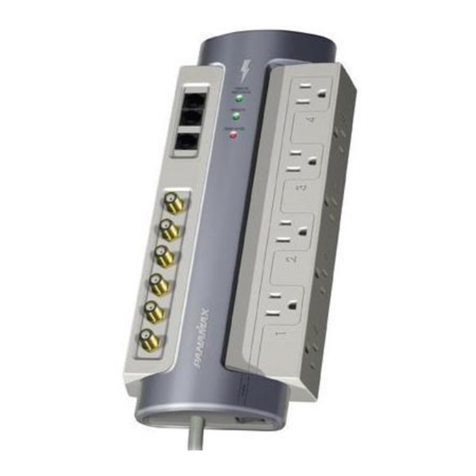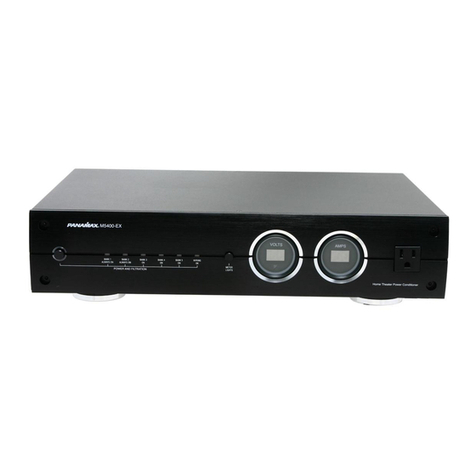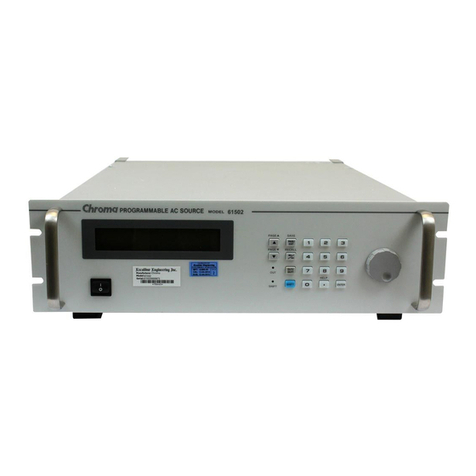
10
Operation and Continuous Use
Power Switch | Circuit Breaker and LED Power Indicator
Once the AC cords are properly connected to the AC source tap, and the components are connected to the
appropriate outlet banks, it is safe to energize the Niagara 5000UK. On the right-hand side of the Niagara 5000UK’s
front panel, there is a black rocker switch. Firmly press the rocker switch so that its upper portion is ush with the
front panel. Typically, within a couple of seconds, you should hear an audible “clack” sound(s) from one or more
relays within the Niagara 5000UK. At the same time, the front-panel LED power indictor will glow blue, signifying
that the unit is operational. (If this does not occur, see the “Trouble-Shooting Guide” in this manual.)
Rear-Panel Power Correction Switch | Niagara 5000UK Current Draw
The default position for this switch should always be “Engaged” or “1”—even for applications in which there
are no power ampliers of any kind powered by the Niagara 5000UK. Defaulting to “Engaged”/“1” serves two
functions: It activates the Transient Power Correction Circuit for power ampliers that would be energized by
outlet Bank 1, and also provides a portion of the Level-X Ultra-Linear Noise-Dissipation Circuit for outlets 4
through 11. Although no damage to the Niagara or the connected components will occur, performance will be
compromised when this switch is not set to the “Engaged”/“1” position.
However, there is one exception to this. Niagara 5000UK has an internal current sense circuit that will automatically
engage the Transient Power Correction Circuit, as well as turn it o when your audio/video system is placed in
Standby mode. To utilize this feature, two things must be present:
1. The primary power amplier(s) or powered receiver must be connected to High-Current/Low-Z
Power Correction outlet Bank 1 (as it is the only power bank with the current sense monitoring
for this circuit function).
2. The primary power amplier(s) or powered receiver must have a power standby mode, and its
current consumption at 240VAC in standby mode must not exceed 25 watts. (Although 1 watt is
an industry standard for standby power, many great ampliers routinely dismiss it for reasons of
performance over power savings. Therefore, you should consult the specication sheet in your
amplier’s user manual.)
If these two requirements cannot be met, simply place the power correction circuit switch in the “Engaged”
position and leave it there! Rest easy, knowing that you will receive every last bit of performance the circuit can
deliver. However, if your system allows for the scenario listed above and your amplier(s) or powered receiver
meets the criteria listed above, you may wish to take advantage of the standby circuit. (It is likely that many
systems will meet these criteria. However, if the standby function is not important to you, simply leave the switch
in the “Engaged” position).
The standby function was not created to place the connected system into a standby or switched mode, but
rather to place the Transient Power Correction Circuit into standby mode (disengaged), for instances when the
system is powered but not functioning (i.e., when there is no signal present). This was implemented because
the Transient Power Correction Circuit creates a reactive current draw of as much as 9 to 10 amps RMS at idle
(real world draw is a small fraction of an amp), and electrical technicians who connect a current probe to a
product such as this are frequently alarmed: They suspect that the product is either broken or that it is drawing a
distressingly high amount of current from the wall outlet (akin to a power amplier left in full operational mode).
This is actually far from the truth. If the Niagara 5000UK was consuming that much current (or even 30% of that
level), it would need to dissipate the energy loss in heat. It would be quite warm (even hot) to the touch, just like
most power ampliers while in operation. In fact, the Niagara 5000UK runs cool, precisely because this current
reading is false. The circuit utilizes massive capacitive reactance across the AC line, which, akin to a battery, will
both absorb and immediately release the current several times per second. Further, when incorporated with
